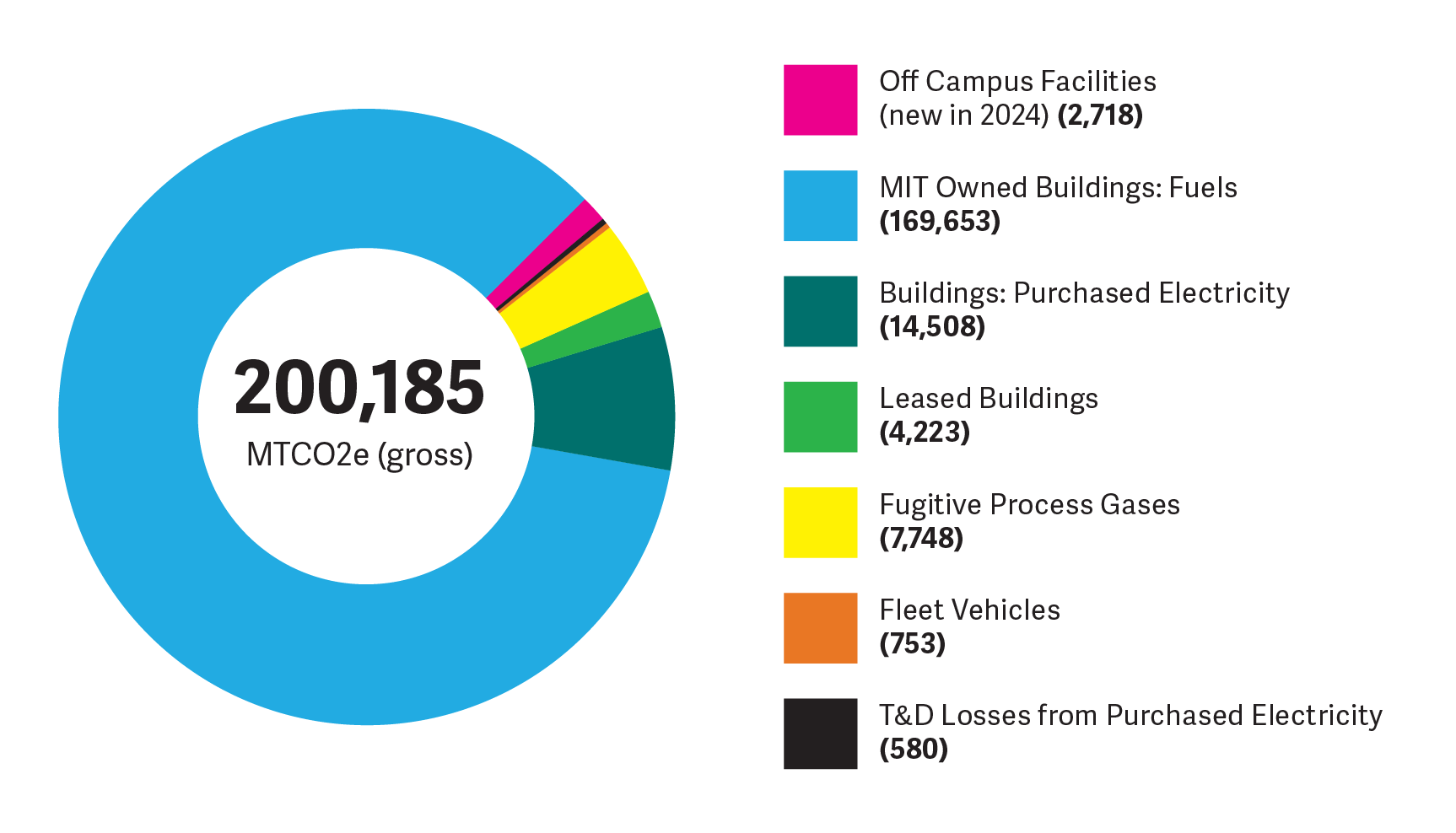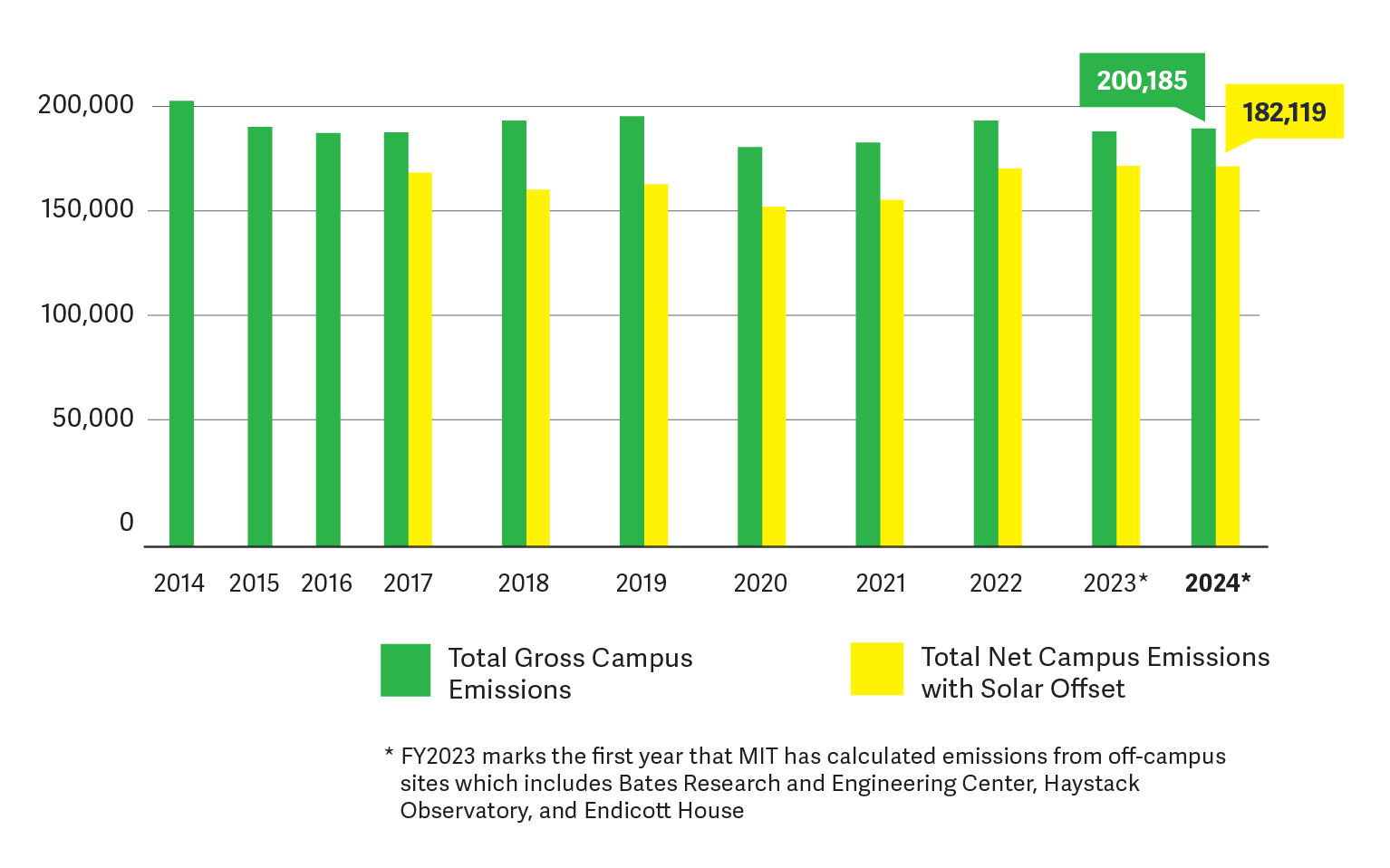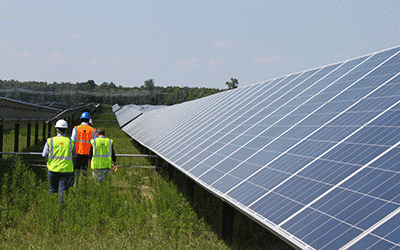Charting the path forward
MIT's 2024 Decarbonization Progress Report
In fiscal year 2024, MIT reduced its total building-related on-campus emissions by 3 percent from the previous year, even after the addition of the new Schwarzman College of Computing and Tina and Hamid Moghadam Building. This reduction in emissions is largely attributed to energy efficiency projects targeting multiple campus buildings. Including all sources of campus emissions and the impact of MIT’s Summit Farms solar power purchase agreement (PPA), MIT’s emissions in 2024 were 15 percent below the total 2014 baseline, despite significant growth in campus facilities, including MIT.nano and many others. This PPA enabled the Institute to offset 9 percent of its total on-campus emissions in fiscal year 2024.
MIT Greenhouse Gas Emissions Sources, FY2024

Campus Decarbonization: Priority Strategies in FY2024
Energy Retrofit Success Story
In assessments of top energy-consuming buildings on campus, Building 46 (Brain and Cognitive Science Complex) was always the top energy consumer—making it a prime candidate for a deep energy retrofit with potentially big impacts on campus energy use. Completed in early 2024, the retrofit included all 1,254 lab and office spaces in the complex and focused on optimized ventilation, converted fume hoods from constant volume to variable volume, and equipment to help the building systems run more efficiently. Based on data from the six months of operation with the updates, Building 46 is on target to reach 90 percent of its forecasted reduction of 35 percent in building energy use, resulting in close to a two percent overall reduction of campus emissions.
This project serves as a model as a Department of Facilities team representing Campus Construction, Engineering & Energy Management, and Campus Services & Maintenance work through large-scale efficiency projects in other top energy consumers on campus, including Buildings 76 and 68.
Campus renewables energy generation grows
Four new solar panel installations will grow MIT’s renewable energy generation by more than 400 percent, a goal outlined in MIT’s Fast Forward climate action plan. The installations on multiple campus buildings—the Stratton Student Center (W20), the Dewey Library building (E53), New Vassar (W46), and the Theater Arts building (W97)—will add more than 500 kilowatts of installed solar capacity to campus. In addition to existing solar installations at MIT, the total output will be 650 kilowatts, annually. The solar installations are an important facet of MIT’s approach to eliminating all direct campus emissions by 2050.

Advancing a net-zero MIT

A New Model for Power Purchase Agreements
To fulfill the greenhouse gas reduction goals outlined in the 2021 climate action plan, MIT is dedicated to a longer-term commitment of achieving complete decarbonization of campus energy systems while addressing a short-term critical need to reduce carbon emissions from the nation’s electric grids. MIT is co-leading an effort to enable the development of two new large-scale renewable energy projects in regions with carbon-intensive electrical grids: Big Elm Solar in Bell County, Texas, came online this year, and the Bowman Wind Project in Bowman County, North Dakota, is expected to be operational in 2026. Together, they will add a combined 408 megawatts (MW) of new renewable energy capacity to the power grid.
Summit Farms update
MIT’s existing 25-year power purchase agreement, Summit Farms, was established in 2016, enabling the construction of a roughly 650-acre, 60-megawatt solar farm on farmland in North Carolina. Last year, through the purchase of 60,524 megawatt hours of solar power from Summit Farms, MIT offset 18,065 metric tons of carbon dioxide equivalent (MTCO2E) from on-campus operations.
New England renewables
MIT is also making advances to accelerate renewable energy generation and electricity grid decarbonization at the local and state levels. The Institute concluded an agreement through the Solar Massachusetts Renewable Target (SMART) program that supports the Commonwealth of Massachusetts’ state solar power development goals by enabling the construction of a new 5-megawatt solar energy facility on Cape Cod. The new solar energy system is integral to supporting a new net-zero emissions development that includes affordable housing, while also providing additional resiliency to the local grid.


